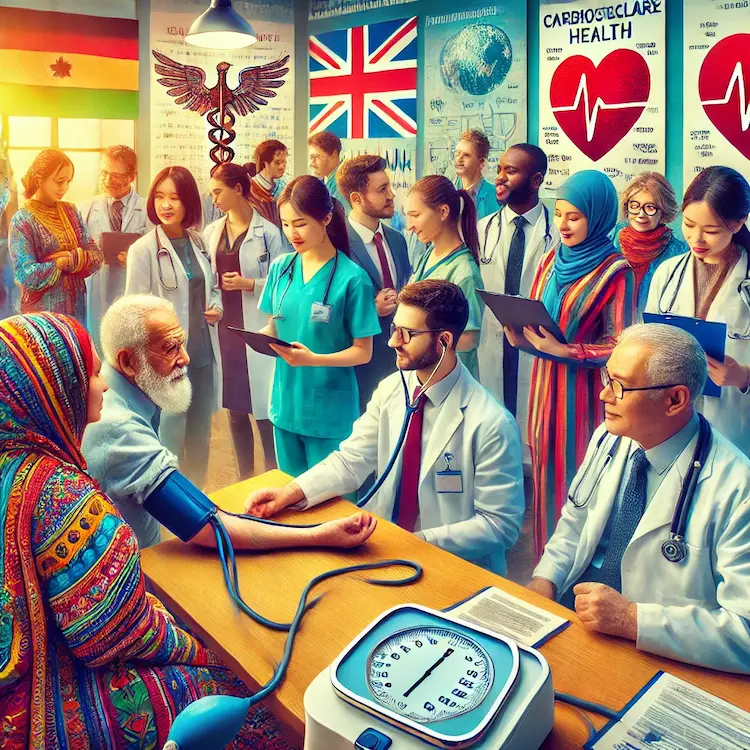Blood pressure (BP) plays a pivotal role in global health, acting as a cornerstone for diagnosing, managing, and preventing cardiovascular diseases (CVDs). Understanding its significance helps address health disparities, reduce healthcare costs, and improve quality of life worldwide. This article explores the multifaceted role of blood pressure in global health, breaking it down into easy-to-understand sections.
Importance of Blood Pressure in Health
Understanding Blood Pressure
Blood pressure is the force exerted by circulating blood on the walls of blood vessels. It is measured using two values:
- Systolic Pressure: The pressure during heartbeats.
- Diastolic Pressure: The pressure between heartbeats.
Normal blood pressure levels typically fall below 120/80 mmHg. Deviations from this range can indicate health risks:
- Hypertension (High BP): Levels above 140/90 mmHg.
- Hypotension (Low BP): Levels below 90/60 mmHg.
Global Prevalence and Impact
- Hypertension affects over 1.28 billion adults globally, according to the WHO.
- It is responsible for approximately 7.5 million deaths annually, contributing to 12.8% of global mortality.
- Developing nations face a disproportionate burden due to limited access to healthcare.

Health and Societal Impacts
Health Consequences
- Cardiovascular Diseases:
- High BP is a leading cause of heart attacks, strokes, and heart failure.
- According to the CDC, 47% of U.S. adults with hypertension are unaware of their condition.
- Kidney Health:
- Chronic hypertension damages renal arteries, leading to chronic kidney disease (CKD).
- Cognitive Decline:
- Studies link unmanaged hypertension to dementia and Alzheimer’s disease.
Societal and Economic Burden
- Hypertension increases healthcare costs due to hospitalizations, medication, and productivity loss.
- WHO estimates the economic cost of untreated hypertension at $370 billion annually.
Methods of Measuring and Monitoring Blood Pressure
| Method | Description | Accuracy | Usage |
|---|---|---|---|
| Manual Sphygmomanometer | Uses a cuff and stethoscope; requires expertise. | High | Clinical settings |
| Digital BP Monitors | Automatic and user-friendly devices. | Moderate to High | Home and clinics |
| Ambulatory BP Monitoring (ABPM) | Worn for 24 hours to record BP at intervals. | High | Detecting “white-coat hypertension.” |
| Wearable Devices | Smartwatches and fitness trackers with BP sensors. | Varies | Lifestyle monitoring |
Practical Tips for Monitoring
- Measure BP at the same time daily.
- Avoid caffeine or smoking 30 minutes before measurement.
- Rest for 5 minutes before taking a reading.
Comparing Management Approaches
Lifestyle Modifications
- Diet:
- The DASH diet (rich in fruits, vegetables, and low-fat dairy) reduces BP by up to 11 mmHg.
- Exercise:
- Regular aerobic exercise can lower systolic BP by 4–9 mmHg.
- Stress Management:
- Meditation and yoga significantly lower stress-induced hypertension.
Pharmacological Interventions
- ACE Inhibitors: Relax blood vessels, reducing BP.
- Beta-Blockers: Slow heart rate and decrease cardiac output.
- Calcium Channel Blockers: Prevent calcium from entering heart cells.
Emerging Innovations
- Digital Health Platforms: Apps like Omron Connect offer real-time BP tracking.
- Gene Therapy: Research shows potential in targeting hypertension at a genetic level.
Practical Advice for Individuals
- Adopt a Healthy Lifestyle:
- Prioritize balanced nutrition and regular physical activity.
- Regular Monitoring:
- Use reliable devices to track BP trends.
- Seek Professional Guidance:
- Consult healthcare providers for tailored management plans.
Key Takeaways
- Blood pressure management is critical for reducing global disease burdens.
- Effective tools and approaches exist to monitor and manage BP.
- Awareness, education, and access to healthcare resources are essential for global health improvements.
Conclusion
Blood pressure plays a vital role in global health, influencing cardiovascular health, kidney function, and overall well-being. With hypertension affecting over a billion people worldwide, effective monitoring and management strategies are crucial. Lifestyle modifications, advanced monitoring tools, and medical treatments provide effective ways to control BP and prevent severe health complications. By raising awareness, adopting healthier habits, and leveraging modern healthcare innovations, individuals and communities can work toward reducing the global burden of high blood pressure and improving public health outcomes.


